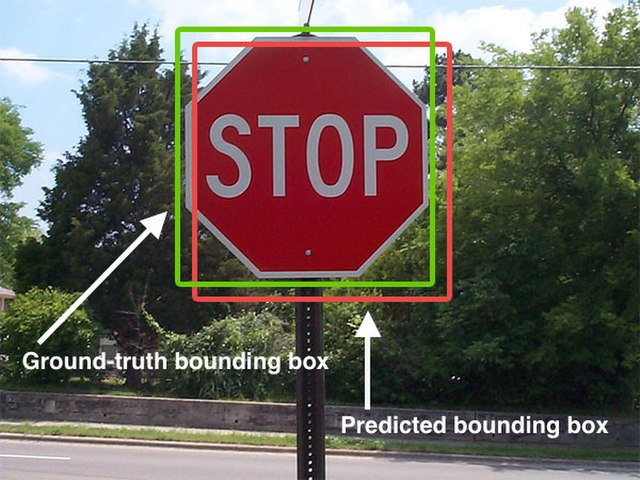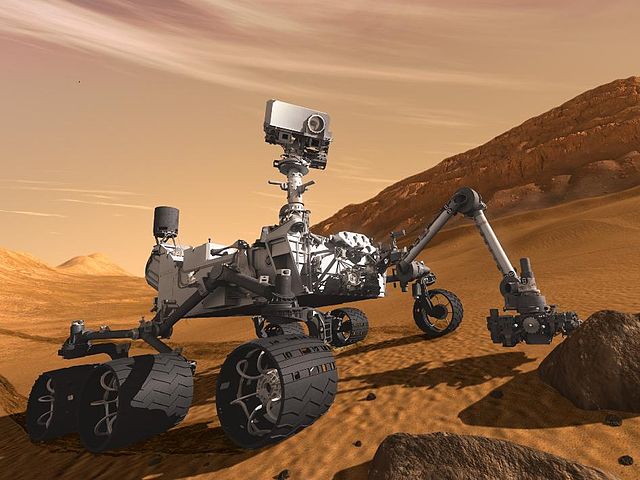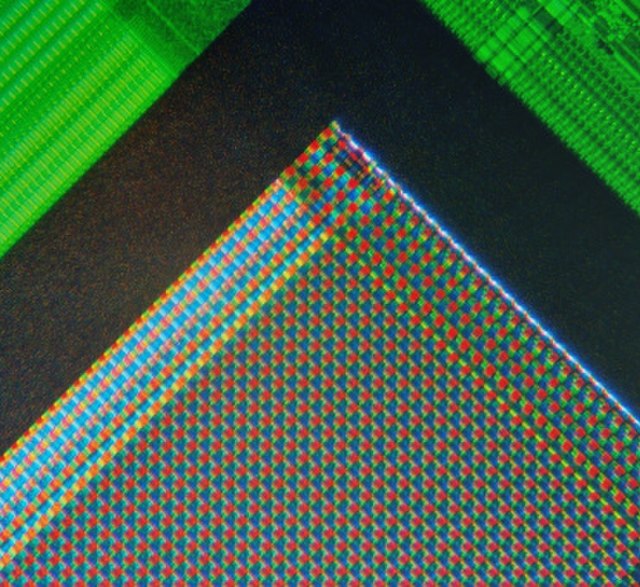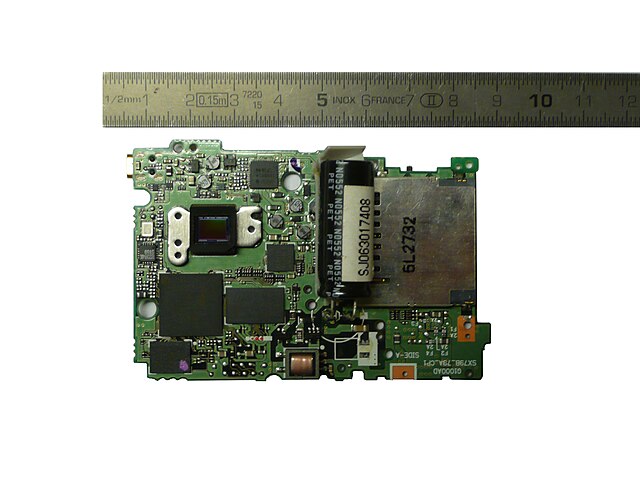Computer vision tasks include methods for acquiring, processing, analyzing and understanding digital images, and extraction of high-dimensional data from the real world in order to produce numerical or symbolic information, e.g. in the forms of decisions. Understanding in this context means the transformation of visual images into descriptions of the world that make sense to thought processes and can elicit appropriate action. This image understanding can be seen as the disentangling of symbolic information from image data using models constructed with the aid of geometry, physics, statistics, and learning theory.
Object detection in a photograph
Artist's concept of Curiosity, an example of an uncrewed land-based vehicle. The stereo camera is mounted on top of the rover.
An 2020 model iPad Pro with a LiDAR sensor
An image sensor or imager is a sensor that detects and conveys information used to form an image. It does so by converting the variable attenuation of light waves into signals, small bursts of current that convey the information. The waves can be light or other electromagnetic radiation. Image sensors are used in electronic imaging devices of both analog and digital types, which include digital cameras, camera modules, camera phones, optical mouse devices, medical imaging equipment, night vision equipment such as thermal imaging devices, radar, sonar, and others. As technology changes, electronic and digital imaging tends to replace chemical and analog imaging.
A CCD image sensor on a flexible circuit board
An American Microsystems, Inc., (AMI) 1-kilobit DRAM chip (center chip with glass window) used as an image sensor by the Cromemco Cyclops
A micrograph of the corner of the photosensor array of a webcam digital camera
Image sensor (upper left) on the motherboard of a Nikon Coolpix L2 6 MP







